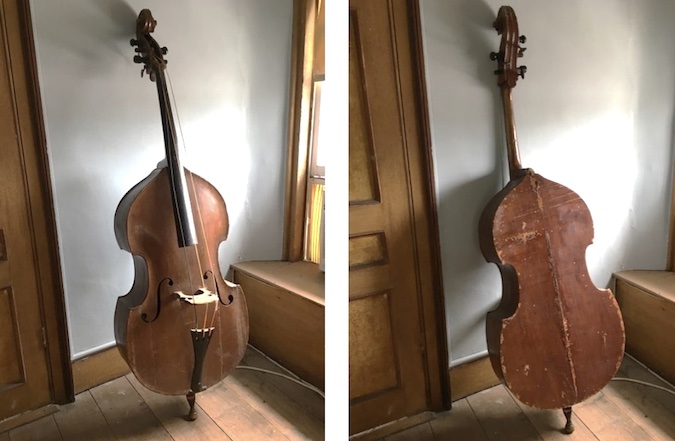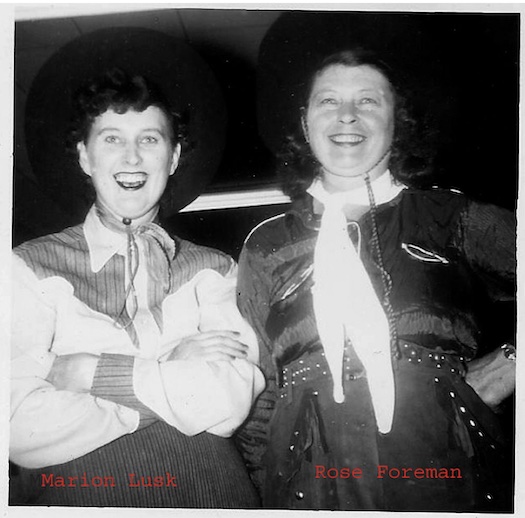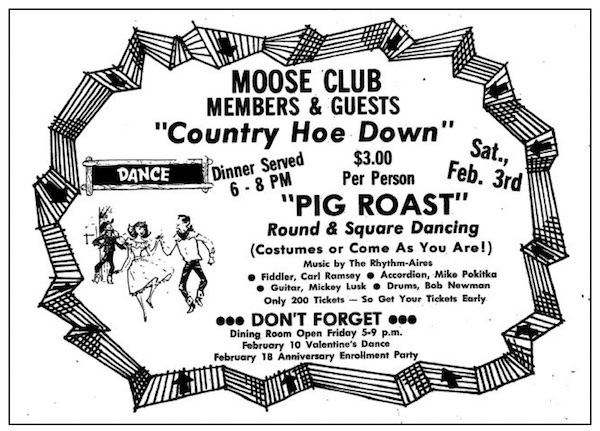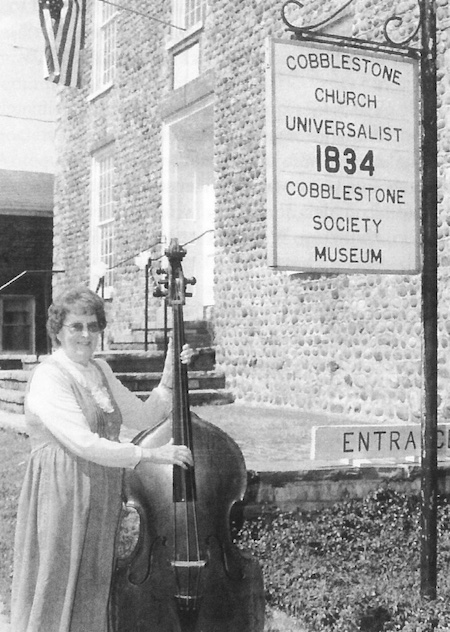Historic Childs: Musical Instruments, Part 1 – The Bass Viol

The Cobblestone Museum owns a Bass viol that is more than 200 years old. It is displayed in the choir loft of the Cobblestone Church on Route 104.
By Doug Farley, Cobblestone Museum Director – Vol. 3 No. 10
Lately, I’ve enjoyed teaming up with retired museum director Bill Lattin to produce several recent articles of the “Historic Childs” series, including the eight article series on “Popular Images of Yesteryear.”
I always learn a lot when I work with Bill and, having been a “Niagara County boy,” I’m pleased to have firmly extended my horizons into Orleans County. And, it’s very nice that Orleans County readers have made me feel so welcome.
The crunch to produce weekly articles has required me to open my eyes and take a good look at the great wealth of history in and around the Hamlet of Childs, and particularly, the Cobblestone Museum. That being said, I pitched the idea to Bill about a new series of articles about historic musical instruments at the Museum, and we decided that while we are at it, we could throw in some articles about some of Edison’s earliest devices that reproduced the human voice, too.
Let’s begin with a Bass viol that has been displayed in the choir loft of the Cobblestone Church since well before my arrival in 2017. The idea of a Bass viol on exhibit at the church makes perfect sense. The bass was one of the early instruments that would have accompanied hymn singing in the 18th and 19th centuries. Bill Lattin wrote about this particular instrument in his Directors Report of August 1996:
“The museum was given an old Bass viol by Marion “Mickey” Lusk. I did a story on it for my weekly column (Bethinking Old Orleans) and also a news release for Batavia, Lockport and Niagara Falls. Jim Orr took a photo for these.”
The Bass viol in question was believed to be over 200 years old at the time of its arrival at the Museum. The instrument itself, when examined closely, shows that it has seen a lot of use over the years, decades, and even centuries of music making. To quote Paul Harvey, I was pleased to learn “the rest of the story.”

Marion “Mickey” Lusk (1921-2012) and her mother, Rose Foreman, circa 1940s
Prior to the instruments arrival at the Cobblestone Museum, Marion “Mickey” Lusk had played the bass with a variety of musical groups including the “Rhythmnaires” and “Troubadours.”
Mickey related that both she and her mother, Rose Foreman, played the bass. Her mother began by first using a bow, until someone said, “Rose, just pluck it!” Mickey said, after that she just plucked it, “but used to get some pretty sore fingers.”

Mickey Lusk and the Rhythm-Aires providing Country-Western entertainment, Medina Journal Register, Feb. 1, 1973
In 1939, Mickey Lusk played with the “Rhythm Ramblers” at the Corfu Grange. Others who played with the ensemble were Joe Colby, Pee Wee Southcott and Jack Lacy. Years earlier this popular group could be heard on radio stations in Lockport and Batavia. This group broke up in the 1940s and another group known as the “Rhythm-Aires” was formed in the mid-1950s. In 1955 Mickey also played with Cy Roberts and the “Troubadours.”
In 1963, Mickey Lusk and her “Rhythm Ramblers” performed in the Holley “Hootenanny Show” to benefit the Cancer Society. The presentation followed the same format as the “Hootenanny” TV Show that was popular at the time. Other entertainment at that event included the “Epics” of Mount Morris, and the “Cyclones” of Medina.
Going back even further, Mickey Lusk offered more history about the old Bass viol:
“Sometime in the early 1920s, Frank Bissell went to the Bragg Schoolhouse Road and bought the bass from Veteran Bragg for five dollars. He brought it home and taught his daughter Rose to play it for house dances. In the late 1920s, Frank sold it to Walter Lusk, again, for five dollars. Then in 1940, Alvie Culver had an auction and Rose and Mike Foreman saw it there. They bid on the bass and bought it for fifty cents. They brought it home and took it over to Fred Hagadorn at Royalton to fix it. He wanted to buy it and offered $300. At that time, it was about 150 years old. Rose told him “no” and took it home and played it with her daughter in their orchestra. It was played until about 1955.”
In 1996, Mickey Lusk said the Bass viol represents “a lot of good times and a lot of tears.” Today, it is an artifact which represents the cultural climate of a bygone era. The bass is unusual in that it was built with only three strings (which helps to date it.) Fred Hagadorn thought it might have been built by a German maker of musical instruments.

This photo from 1996 shows Marion Lusk playing the three-string bass next to the Cobblestone Church at the time of her donation.
Fast forward to 2022 during a digitization project for the Museum’s old photos, and the Bass viol became the topic of conversation once again. The archivist became intrigued with this photo of Marion Lusk and the three string bass from 1996. He offered his observations at that time:
“I emailed the photograph (above) to my older brother who is the retired double bass symphony musician. Over the years he has done repairs and restorations of string bass instruments. He replied that 3-string basses were common in the 18th-19th centuries in parts of Europe, especially in Italy and France. He bought (for $3,000) a c.1880 French bass from a friend several years ago that needed some work. It had been crudely converted to 4-strings…and over about six months of part-time fooling, including rebuilding the peg box completely, made it more playable. He sold it a couple of years ago to a friend for $25,000. The pegs (“hat-peg”) in this picture aren’t French, I think; maybe German or Eastern Europe? The bass shape could easily be French though.”
While the Museum doesn’t focus on the monetary value of its collection (We don’t intend to sell our artifacts!) it is interesting to note that an item purchased for 50 cents at auction in the 1940s has possibly appreciated into five-figure territory.
Unfortunately though, the Museum’s Bass viol has many condition issues that the 1996 photograph didn’t depict, such as modern metal screws holding several parts of the instrument’s 1800s wooden body together.
Perhaps a music lover would be willing to help fully restore this cherished piece of history for future generations to enjoy?










































































